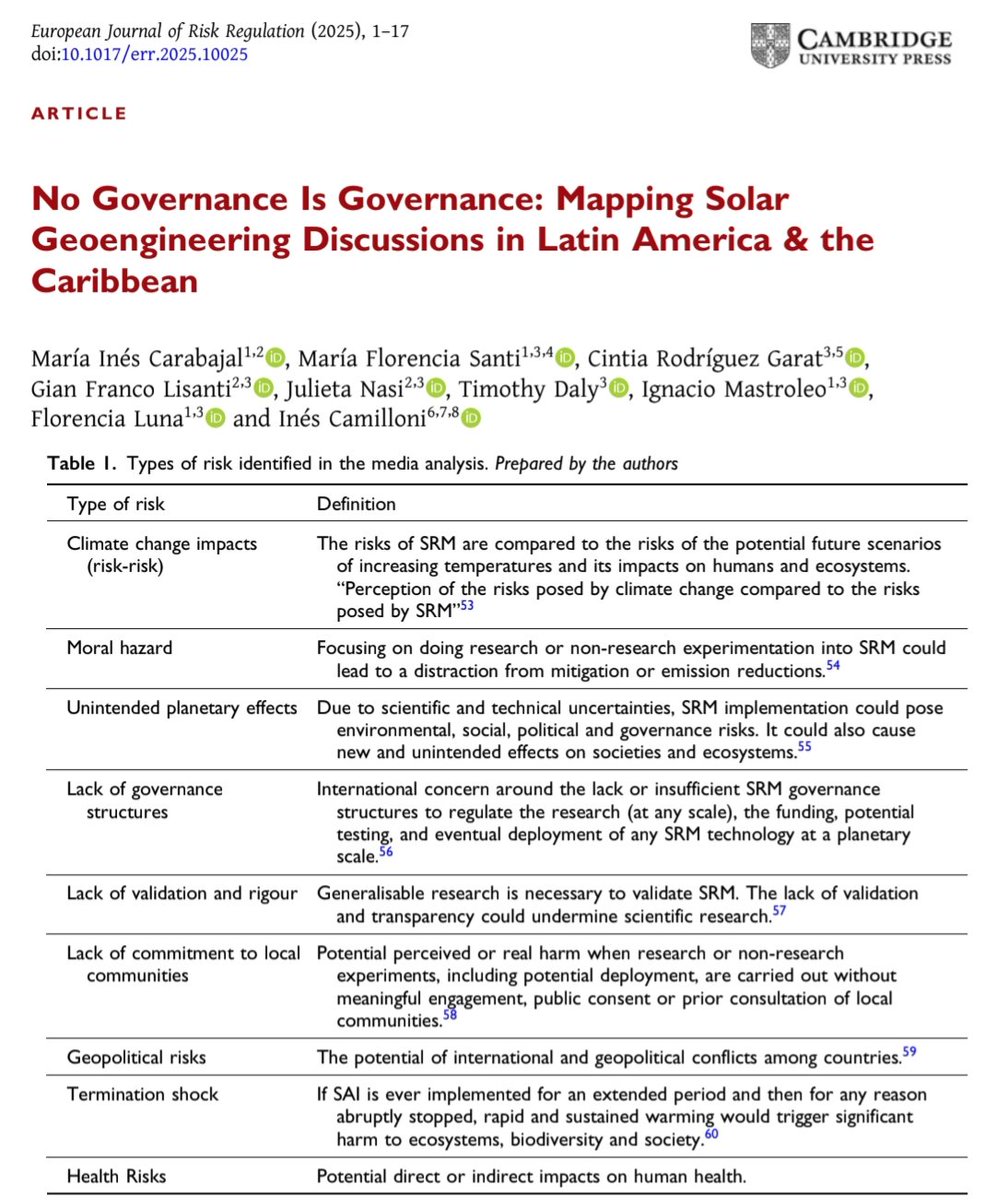🚨Solar Geoengineering (#SRM) may seem cheap (~$18B/yr) to cool the planet, but when you factor in societal risks, political instability & sudden climate rebounds, the true cost may far exceed technical estimates from both moral & practical standpoints, says a new study.
🧵1/11
🧵1/11

2/ SRM often gets touted as cheap even “pennies per ton” compared to the hundreds of $/ton needed for large-scale CDR.
But these estimates usually ignore the real-world costs of deploying SRM in a politically fractured and climate-damaged world.
But these estimates usually ignore the real-world costs of deploying SRM in a politically fractured and climate-damaged world.
3/ The authors outline four cost domains that traditional SRM estimates often miss:
1️⃣ Compensation for harms
2️⃣ International coordination
3️⃣ Domestic political feasibility
4⃣ Termination Shock
Each could add major financial & political costs. Details below:
1️⃣ Compensation for harms
2️⃣ International coordination
3️⃣ Domestic political feasibility
4⃣ Termination Shock
Each could add major financial & political costs. Details below:

4/ 1⃣ Compensation for Harms
If SRM deployment leads to regional droughts, floods, or other weather impacts, affected countries may demand compensation in the form of damage payouts, insurance, or legal battles, none of which are in standard cost models.
If SRM deployment leads to regional droughts, floods, or other weather impacts, affected countries may demand compensation in the form of damage payouts, insurance, or legal battles, none of which are in standard cost models.
5/ Example:
If India perceives that SRM causes a weakened monsoon, it could demand billions in reparations or retaliate diplomatically or militarily.
Such scenarios dramatically shift the cost-risk calculus.
If India perceives that SRM causes a weakened monsoon, it could demand billions in reparations or retaliate diplomatically or militarily.
Such scenarios dramatically shift the cost-risk calculus.
6/ The study estimates that unintended SRM harms could affect up to 7% of the global population, with costs ranging from $0 to $809 billion/t, dwarfing the often-cited deployment cost of ~$18B. 

7/ 2⃣ International Coordination
We can’t deploy SRM alone. To maintain legitimacy and avoid backlash, states would need to build coalitions, negotiate terms, and manage conflicts.
That means years of diplomacy, compromise and dollars.
We can’t deploy SRM alone. To maintain legitimacy and avoid backlash, states would need to build coalitions, negotiate terms, and manage conflicts.
That means years of diplomacy, compromise and dollars.
8/ 3⃣ Domestic Political Feasibility
Even initiating SRM research or small-scale deployment may face massive public opposition.
Litigation, regulation, and electoral pressures could delay or block action, driving up costs or killing projects.
Even initiating SRM research or small-scale deployment may face massive public opposition.
Litigation, regulation, and electoral pressures could delay or block action, driving up costs or killing projects.
9/ 4⃣ Termination Shock
It is a massive unpriced risk. If SRM is started but later stopped due to war, public backlash, or political collapse, the planet could experience rapid, devastating warming with overnight.
Models show it could undo decades of mitigation overnight.
It is a massive unpriced risk. If SRM is started but later stopped due to war, public backlash, or political collapse, the planet could experience rapid, devastating warming with overnight.
Models show it could undo decades of mitigation overnight.
10/ The authors argue that these political costs aren’t “extras”, they are core features of real-world SRM deployment. Ignoring them leads to wildly misleading cost comparisons with CDR.
📝For more details, read the study entitled "The social costs of solar radiation management " here:
🧵11/11 #SRM #SolarGeoengineeringnature.com/articles/s4416…
🧵11/11 #SRM #SolarGeoengineeringnature.com/articles/s4416…
"Unroll" @threadreaderapp
• • •
Missing some Tweet in this thread? You can try to
force a refresh









